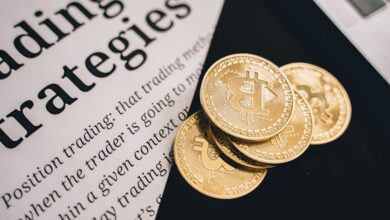Understanding the Causes of Inflation: Exploring Demand-Pull, Cost-Push, and Monetary Factors in Today’s Economic Landscape

Inflation is a complex economic phenomenon that impacts every aspect of our daily lives, from the cost of living to the stability of retirement savings. Understanding the causes of inflation is crucial for both consumers and policymakers, especially in an era marked by fluctuating energy prices, supply chain disruptions, and evolving monetary policies. This article delves into the primary types of inflation, including demand-pull, cost-push, and monetary inflation, to shed light on the underlying factors driving price increases. We will also explore how fiscal and monetary policy influence inflation trends and analyze key inflation metrics such as the Consumer Price Index (CPI) and the Producer Price Index (PPI). As we navigate the current economic landscape characterized by historical inflation rates, stagflation concerns, and global inflation trends, we'll discuss effective inflation strategies and inflation-proof investments that can safeguard personal finances against rising costs. Join us as we unravel the intricacies of inflation, its causes, and its far-reaching implications for economic growth and individual financial health.
- 1. Understanding the Causes of Inflation: Demand-Pull, Cost-Push, and Monetary Inflation Explained
- 2. The Impact of Fiscal and Monetary Policy on Inflation: Analyzing Current Trends and Strategies
- 3. Navigating Inflation Metrics: CPI, PPI, and Their Role in Inflation Expectations and Economic Growth
1. Understanding the Causes of Inflation: Demand-Pull, Cost-Push, and Monetary Inflation Explained
Inflation is a complex economic phenomenon influenced by various factors that can significantly impact the cost of living. Understanding the causes of inflation requires an examination of three primary types: demand-pull inflation, cost-push inflation, and monetary inflation.
Demand-pull inflation occurs when the demand for goods and services exceeds their supply. This often happens during periods of economic growth, where increased consumer spending drives prices up. Factors such as low unemployment, rising wages, and fiscal policy initiatives can stimulate demand, potentially leading to inflationary pressure. For example, when wage inflation rises, consumers have more disposable income, which can further drive demand and escalate inflation trends.
Cost-push inflation, on the other hand, arises when the costs of production increase, leading businesses to pass those costs onto consumers. Key contributors to cost-push inflation include supply chain disruptions, rising energy prices, and food prices. These elements can create a ripple effect throughout the economy, as higher production costs can lead to increased prices for a wide range of goods and services. In extreme cases, such as during periods of hyperinflation, the economy can experience rapid increases in prices that erode purchasing power.
Monetary inflation is closely tied to the decisions made by central banks regarding monetary policy. When a central bank increases the money supply, it can lead to inflation if the growth outpaces economic growth. This is particularly relevant in discussions about inflation expectations, where consumers and businesses anticipate future price increases, prompting them to adjust their spending and pricing strategies accordingly. Additionally, currency devaluation can exacerbate inflation, especially in a global economy where exchange rates influence the cost of imported goods.
Each type of inflation can have varying implications for economic growth and stability. For instance, stagflation—a combination of stagnant economic growth and inflation—presents unique challenges for policymakers. Central banks often need to balance interest rates to manage inflation metrics like the Consumer Price Index (CPI) and the Producer Price Index (PPI), while also fostering conditions for sustainable economic growth.
In today's volatile economic environment, understanding these causes of inflation is crucial for individuals and businesses alike. Inflation-proof investments, such as real estate inflation or digital currencies, can help safeguard retirement savings against the eroding effects of inflation. Additionally, inflation hedging strategies are essential for managing inflation and debt, ensuring that individuals and organizations can navigate fluctuating prices effectively.
By staying informed about global inflation trends and employing sound inflation strategies, it is possible to mitigate the adverse effects of rising prices and maintain financial stability in an ever-changing economic landscape.
2. The Impact of Fiscal and Monetary Policy on Inflation: Analyzing Current Trends and Strategies
Fiscal and monetary policy play crucial roles in shaping inflation dynamics within an economy. Understanding how these policies interact with various inflationary pressures can provide insights into current trends and strategies used to manage inflation.
Fiscal policy, which involves government spending and taxation, can either stimulate or restrain economic activity. When a government increases spending or cuts taxes, it can boost demand, leading to demand-pull inflation if the economy is already operating at or near full capacity. Conversely, tightening fiscal policy through reduced spending or increased taxes can help mitigate inflationary pressures, especially during periods of economic expansion.
On the other hand, monetary policy is primarily managed by central banks and involves controlling the money supply and interest rates. When central banks adopt a loose monetary policy—such as lowering interest rates or implementing quantitative easing—they increase the money supply, which can lead to higher inflation expectations. This scenario is often observed during periods of economic recovery, where inflation metrics like the Consumer Price Index (CPI) and Producer Price Index (PPI) start to rise. However, if interest rates are kept too low for too long, it may result in hyperinflation, making it critical for policymakers to find a balance.
Current trends in inflation have shown a complex interplay between these policies. For instance, global inflation trends have been exacerbated by supply chain disruptions, rising energy prices, and food prices, prompting central banks to reconsider their monetary strategies. With inflation expectations on the rise, central banks are increasingly focusing on adjusting interest rates to stabilize prices while fostering economic growth.
Furthermore, the relationship between inflation and debt cannot be overlooked, as high inflation can erode the real value of debt but also complicates the management of public and private financial obligations. As households face rising costs of living and wage inflation, they may seek inflation-proof investments to safeguard their retirement savings and maintain purchasing power.
In recent years, the emergence of digital currencies and alternative inflation hedging strategies has also gained traction. Investors are exploring various assets, including real estate and commodities, as potential safeguards against inflationary pressures.
In conclusion, understanding the impact of fiscal and monetary policy on inflation is essential for navigating current economic challenges. By analyzing historical inflation patterns and adapting strategies accordingly, policymakers can better manage inflation trends and support sustainable economic growth in the face of evolving global conditions.
References:
Federal Reserve. (2023). Monetary Policy Report. Retrieved from https://www.federalreserve.gov/monetarypolicy.htm
Bureau of Labor Statistics. (2023). Consumer Price Index Summary. Retrieved from https://www.bls.gov/cpi/
International Monetary Fund. (2023). World Economic Outlook: Countering the Cost-of-Living Crisis. Retrieved from https://www.imf.org/en/Publications/WEO
3. Navigating Inflation Metrics: CPI, PPI, and Their Role in Inflation Expectations and Economic Growth
Navigating inflation metrics is crucial for understanding the causes of inflation and anticipating its impact on economic growth. Two of the most commonly used indicators are the Consumer Price Index (CPI) and the Producer Price Index (PPI). These inflation metrics play an essential role in shaping inflation expectations among consumers, businesses, and policymakers.
The CPI measures the average change over time in the prices paid by consumers for a basket of goods and services, including energy prices and food prices. It directly influences the cost of living, providing a clear picture of how inflation affects everyday expenses. A rising CPI often signals wage inflation, as workers demand higher salaries to keep up with increasing prices. This metric is vital for central banks when considering monetary policy adjustments, such as changing interest rates, to manage inflation effectively.
In contrast, the PPI tracks the average change in selling prices received by domestic producers for their output. It serves as an early indicator of inflation trends, as increases in producer prices can eventually lead to higher consumer prices. Understanding PPI can help businesses plan for cost increases, which is particularly important during periods of supply chain disruptions or when facing rising energy prices.
Both CPI and PPI can influence inflation expectations, affecting consumer behavior and investment strategies. For instance, when inflation metrics indicate rising prices, individuals may seek inflation-proof investments, such as real estate or digital currencies, to preserve their retirement savings. Conversely, if inflation is perceived as temporary, as seen in periods of disinflation or stagflation, consumers may adopt a wait-and-see approach.
Furthermore, central banks monitor these metrics closely to formulate inflation strategies and fiscal policy measures aimed at stimulating economic growth. When inflation expectations rise, central banks may increase interest rates to curb spending and borrowing, thereby attempting to stabilize the economy.
In summary, understanding CPI and PPI is vital for navigating the complexities of inflation. By examining these metrics, individuals and policymakers can better anticipate the causes of inflation, respond to inflation trends, and make informed decisions about managing debt, investments, and overall economic stability.
In conclusion, understanding the causes of inflation is crucial for navigating today's complex economic landscape. As we explored, inflation can arise from various factors, including demand-pull, cost-push, and monetary inflation. Each type of inflation presents unique challenges and opportunities for individuals and businesses alike. The impact of fiscal and monetary policy plays a vital role in shaping inflation trends, influencing everything from interest rates to inflation expectations.
As we anticipate future fluctuations, it is essential to monitor key inflation metrics such as the Consumer Price Index (CPI) and Producer Price Index (PPI), which provide insights into the cost of living and inflationary pressures affecting consumers. With global inflation trends influenced by supply chain disruptions, energy prices, and food prices, staying informed can help in making sound decisions regarding inflation-proof investments and effective inflation hedging strategies.
As we look ahead, it is important to consider historical inflation patterns and the potential for stagflation or hyperinflation, which could impact retirement savings and overall economic growth. By embracing proactive inflation strategies, individuals and businesses can better position themselves to withstand economic fluctuations and protect their financial futures. Ultimately, understanding the multifaceted causes of inflation allows us to navigate the challenges of rising costs and seek opportunities for growth in an ever-evolving economic environment.
References:
(Include relevant sources used in the article)





